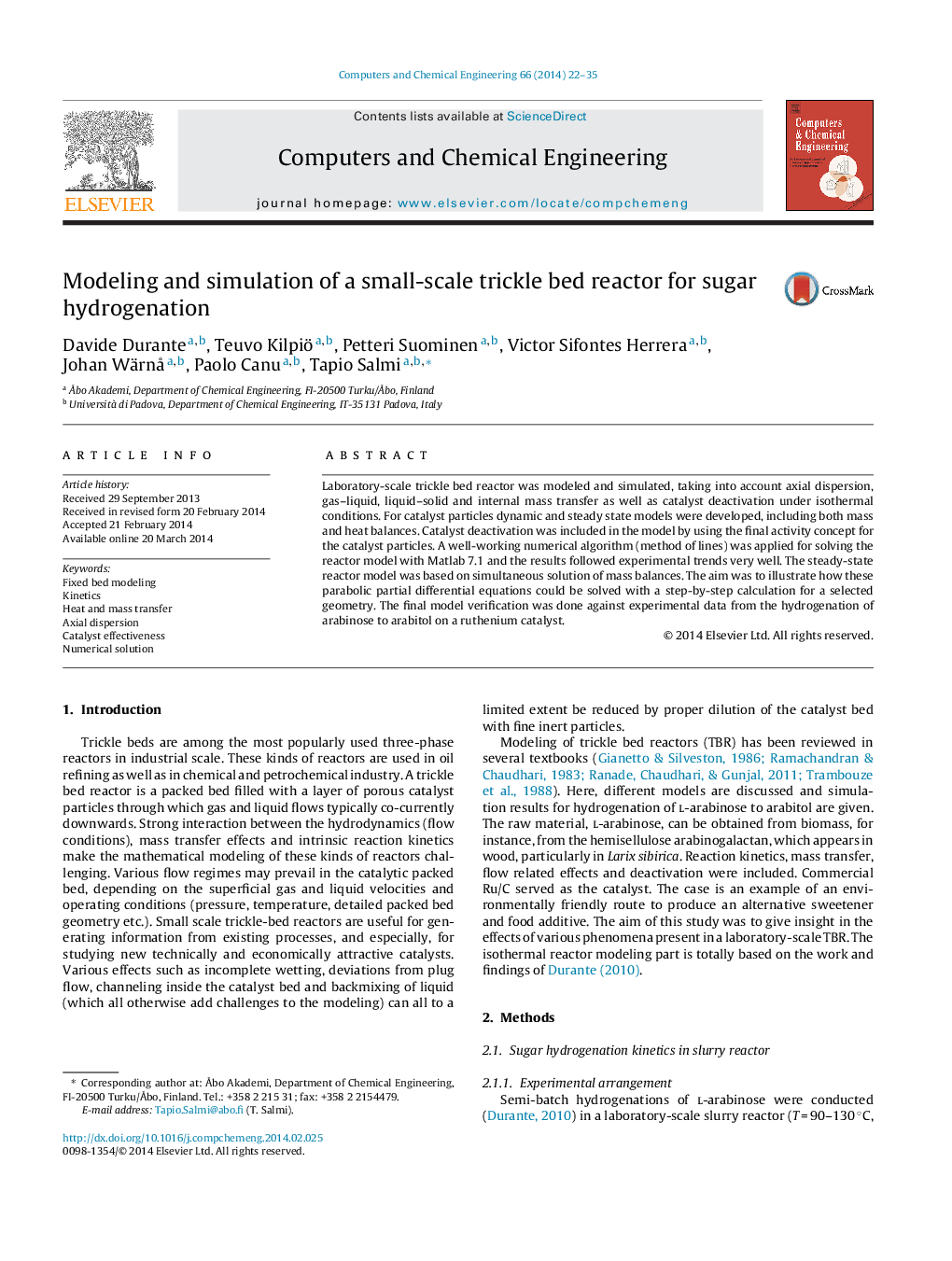| Article ID | Journal | Published Year | Pages | File Type |
|---|---|---|---|---|
| 172397 | Computers & Chemical Engineering | 2014 | 14 Pages |
•The work focuses on laboratory-scale trickle bed reactors which are frequently used tools in the investigation of catalyst activity, selectivity and durability.•Rigorous mathematical modeling was applied to laboratory-scale trickle bed reactors.•The dynamic reactor model is based on the concept of catalytic kinetics, mass transfer and axial dispersion.•Computing models were developed for model simulation and parameter estimation.•The modeling approach was successfully applied on sugar hydrogenation.
Laboratory-scale trickle bed reactor was modeled and simulated, taking into account axial dispersion, gas–liquid, liquid–solid and internal mass transfer as well as catalyst deactivation under isothermal conditions. For catalyst particles dynamic and steady state models were developed, including both mass and heat balances. Catalyst deactivation was included in the model by using the final activity concept for the catalyst particles. A well-working numerical algorithm (method of lines) was applied for solving the reactor model with Matlab 7.1 and the results followed experimental trends very well. The steady-state reactor model was based on simultaneous solution of mass balances. The aim was to illustrate how these parabolic partial differential equations could be solved with a step-by-step calculation for a selected geometry. The final model verification was done against experimental data from the hydrogenation of arabinose to arabitol on a ruthenium catalyst.
